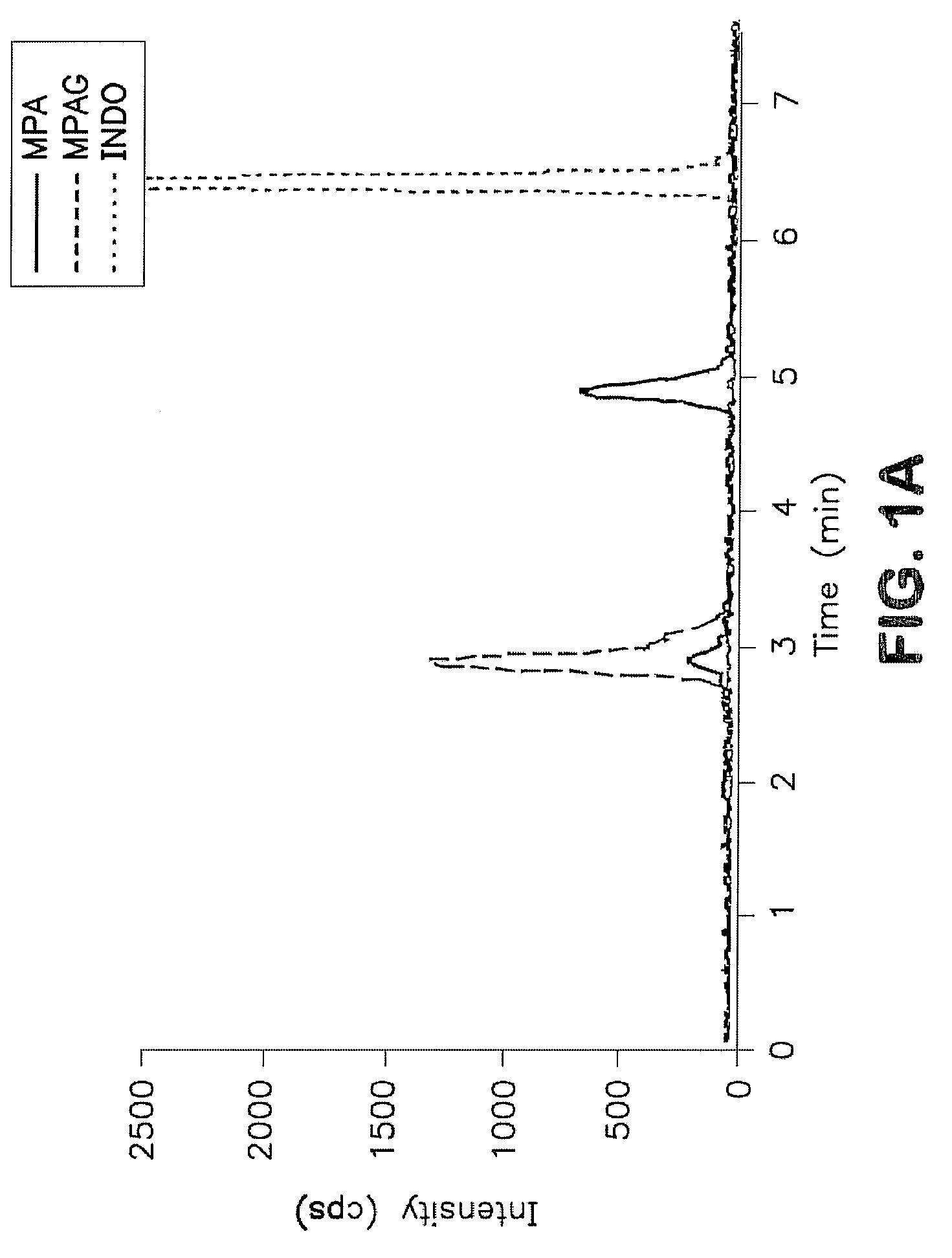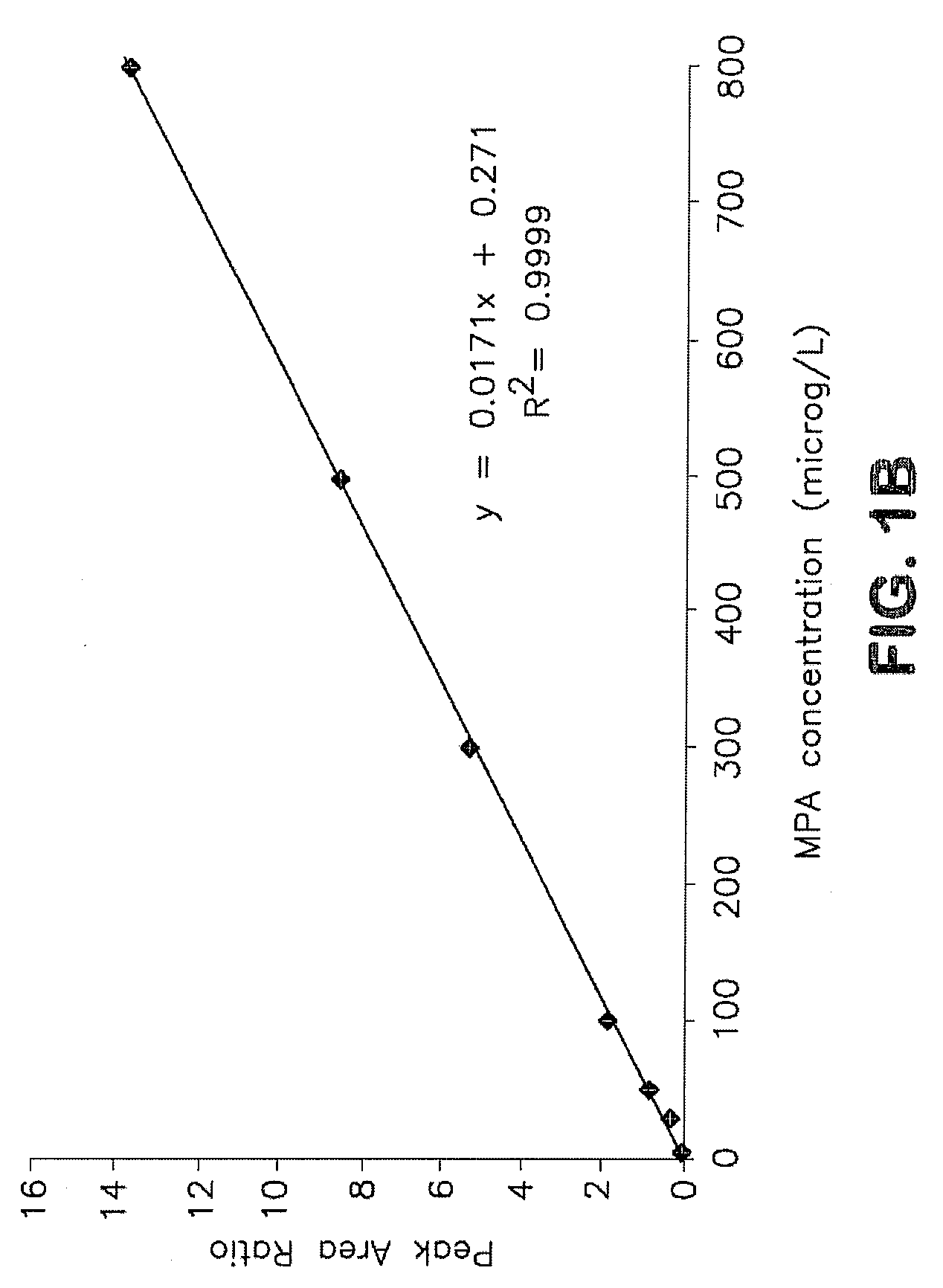Analysis of mycophenolic acid in saliva using liquid chromatography tandem mass spectrometry
a technology of liquid chromatography and tandem mass spectrometry, which is applied in the direction of material analysis, biological material analysis, instruments, etc., can solve the problems of not being able to commercialize assay methods for the measurement of pharmacological agents in saliva, and the single blood concentration obtained before the next dose is usually not enough to assess the extent of drug exposur
- Summary
- Abstract
- Description
- Claims
- Application Information
AI Technical Summary
Benefits of technology
Problems solved by technology
Method used
Image
Examples
Embodiment Construction
[0028]Saliva offers a non-invasive specimen for drug analysis and may prove useful for routine therapeutic monitoring of drugs including immunosuppressive agents. (MPA) is used as an immunosuppressant in combination with a calcineurin inhibitor and a corticosteroid for the prevention and treatment of allograft rejection. In vivo it reduces guanine nucleotide biosynthesis by inhibiting inosine 5′-monophosphate dehydrogenase (IMPDH). Mycophenolic acid exhibit variable pharmacokinetic characteristics therefore, as a guide to dose individualization, monitoring MPA concentrations may improve post transplant outcomes.
[0029]In plasma, MPA is highly bound to serum albumin with an average free fraction of approximately 2 to 3%. Since unbound or free concentration represents the pharmacologically active form of a drug, monitoring unbound MPA may prove beneficial in the clinical practice. Several methods have been used to quantify unbound MPA in plasma including ultrafiltration followed by chr...
PUM
 Login to View More
Login to View More Abstract
Description
Claims
Application Information
 Login to View More
Login to View More - R&D
- Intellectual Property
- Life Sciences
- Materials
- Tech Scout
- Unparalleled Data Quality
- Higher Quality Content
- 60% Fewer Hallucinations
Browse by: Latest US Patents, China's latest patents, Technical Efficacy Thesaurus, Application Domain, Technology Topic, Popular Technical Reports.
© 2025 PatSnap. All rights reserved.Legal|Privacy policy|Modern Slavery Act Transparency Statement|Sitemap|About US| Contact US: help@patsnap.com



